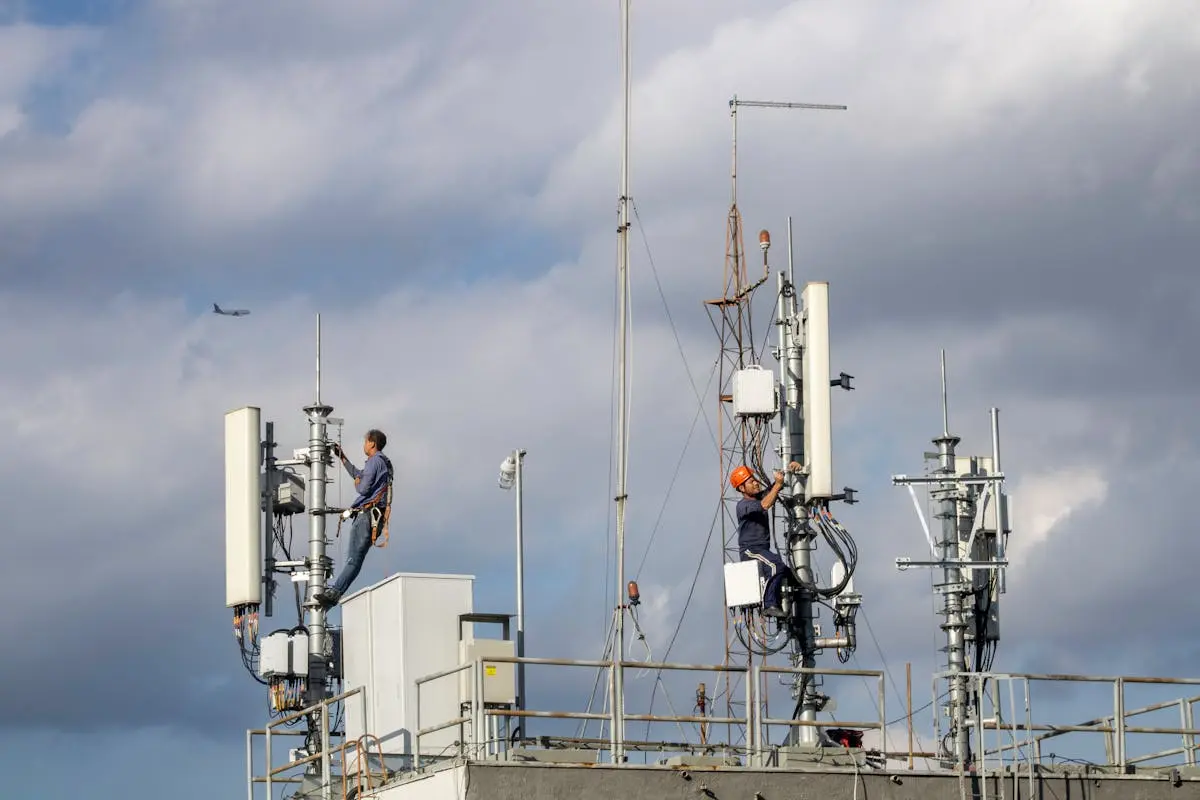Evolution of telecom rigging
The evolution of telecom rigging has brought significant improvements in efficiency on job sites. With advanced technologies and innovative techniques, telecom rigging has evolved to meet the growing demands of the industry. Key areas of evolution include:
- Integration of automated rigging systems
- Utilization of precision engineering
- Implementation of safety protocols and best practices
- Development of specialized tools and equipment
- Incorporation of advanced materials for durability and reliability
Importance of efficiency in telecom rigging
Efficiency is crucial in telecom rigging because it directly impacts productivity and costs. When rigging tasks are carried out efficiently, it reduces the time required for installations and maintenance, leading to quicker project completion and lower labor expenses. It also ensures that resources are used optimally, preventing unnecessary wastage. Additionally, efficient rigging practices contribute to improved safety by reducing the time workers spend at height, thus lowering the risk of accidents. Overall, prioritizing efficiency in telecom rigging operations is essential for maximizing output and minimizing expenditure.
Key challenges in traditional telecom rigging
Traditional telecom rigging faces various challenges that impact efficiency on job sites. Some of these key challenges include:
- Manual Labor Intensity: Rigging often involves a significant amount of manual labor, which can be time-consuming and physically demanding.
- Limited Accessibility: Job sites may have limited accessibility, making it difficult to transport equipment and maneuver within confined spaces.
- Safety Concerns: Rigging work can pose safety risks, especially when working at heights or in adverse weather conditions.
- Outdated Processes: Traditional rigging methods may be outdated and inefficient, leading to longer completion times and increased costs.
Addressing these challenges is crucial for improving efficiency and optimizing telecom rigging processes.
Innovations in telecom rigging tools and equipment
Telecom rigging tools and equipment have seen significant innovations in recent years, aimed at improving efficiency on job sites. Some of the latest advancements in this area include:
- Lightweight and durable rigging tools that reduce physical strain on workers
- Telescopic masts and towers that offer increased height and flexibility
- Advanced safety harness systems with improved ergonomics and fall protection features
These innovations are transforming the telecom rigging industry by enabling faster, safer, and more cost-effective installations and maintenance.
Advantages of modern telecom rigging techniques
Modern telecom rigging techniques offer several advantages that can significantly improve efficiency on job sites. Here are some of the key benefits to consider:
- Increased Speed: The use of modern rigging techniques can streamline the installation process, reducing the time required to set up telecom infrastructure.
- Enhanced Safety: With innovations in rigging equipment and procedures, workers can carry out tasks with greater safety measures in place, minimizing the risk of accidents and injuries.
- Improved Precision: Advanced rigging tools and methods allow for more precise installations, resulting in better quality and performance of the telecom infrastructure.
- Cost Savings: By utilizing efficient rigging techniques, telecom companies can potentially reduce labor and equipment costs while completing projects in a timelier manner.
These advantages highlight the positive impact that modern telecom rigging techniques can have on job site operations, ultimately leading to improved efficiency and productivity.
Safety measures in telecom rigging
Before starting any telecom rigging project, it’s crucial to prioritize safety measures. Here are some key safety steps to consider:
- Comprehensive risk assessment: Identify potential hazards and assess the risks involved in the rigging process.
- Proper equipment inspection: Ensure that all rigging equipment is in good condition and meets safety standards before use.
- Adherence to safety protocols: Rigging personnel should strictly follow safety guidelines and wear appropriate safety gear, such as helmets, harnesses, and gloves, at all times.
- Regular safety training: Continuous training on safety procedures and protocols will help ensure that all personnel are aware of potential risks and know how to mitigate them.
By prioritizing safety measures in telecom rigging, you can improve efficiency while reducing the likelihood of accidents or injuries on job sites.
Enhancing productivity through technology
Technology advancements in telecom rigging have significantly improved productivity on job sites. With the integration of innovative tools and techniques, workers can efficiently complete tasks and minimize downtime. Utilizing advanced equipment and software, such as drones for site surveying and 3D modeling, has streamlined the rigging process. Moreover, the implementation of real-time communication systems has facilitated prompt decision-making and coordination among team members. These technological advancements are paving the way for increased efficiency and effectiveness in the telecom rigging industry.
Case studies of successful telecom rigging projects
Successful telecom rigging projects require detailed planning, skilled execution, and seamless coordination. Here are some case studies that demonstrate the successful execution of telecom rigging projects:
- In a recent project in New York, a team of rigging experts efficiently installed new telecom equipment on a busy urban rooftop, minimizing disruption to neighboring businesses and residences.
- A telecom rigging team in Texas completed the installation of a new tower rigging system ahead of schedule, showcasing their commitment to efficiency and quality workmanship.
- A case study from California highlights a telecom rigging project that involved the careful dismantling of an old tower and the installation of advanced rigging systems, demonstrating the team’s adaptability and expertise.
Training and certification in telecom rigging
To be efficient at telecom rigging, it’s important to have the right training and certification. This will help you gain the necessary skills and knowledge to work safely and effectively on job sites. According to industry standards, telecom riggers typically undergo specialized training programs to learn about proper rigging techniques, equipment operation, safety protocols, and regulatory compliance. Certification programs are also available to validate your expertise and ensure that you meet industry standards. By obtaining the right training and certification in telecom rigging, you can enhance your professional credibility and improve your chances of securing lucrative job opportunities in the telecommunications industry.
Future trends in telecom rigging industry
The future of telecom rigging looks promising, with advancements in technology and equipment aimed at enhancing efficiency on job sites. Some of the upcoming trends include the use of robotic systems for tower maintenance and installation, the integration of artificial intelligence to optimize operations, and the implementation of 5G technology for faster and more reliable network connectivity. These innovations are set to revolutionize the telecom rigging industry, offering improved safety, reduced downtime, and increased productivity for workers in the field.


